HOW TO MOVE A ROW OF BROWNSTONES (1905)
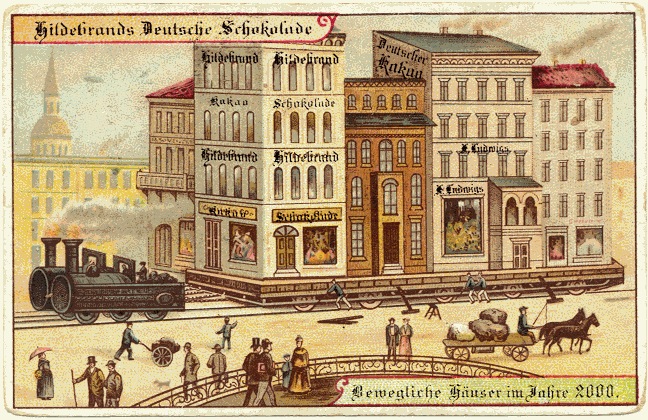
Brownstone Detectives investigates the history of our clients’ homes.
The story you are about to read was composed from research conducted in the course of one of those investigations.
Do you know the history of YOUR house?
********************************************************************************************************************************
It was called “one of the most unusual examples of housemoving” ever.
Up until 1905, no one had ever attempted it.
And it was moving two rows of five Brooklyn brownstone houses together, as a row each, one, across the street, and one across a block AND a street.
Contractors, experienced in the business, had – to this point – only moved much lighter frame houses, even rows of frame house.
But a row of brownstone houses? Impossible!
Over a course of several weeks, though, two rows of brownstone houses were jacked up, stabilized – and then rolled away. These same brownstone houses now sit across the street on Jefferson Avenue – as though they had always been there.
MAKING WAY FOR THE EXTENSION
It all started in the Bedford-Stuyvesant section of Brooklyn, when the State of New York decided it needed more room for an extension to an armory it owned on Sumner Avenue.
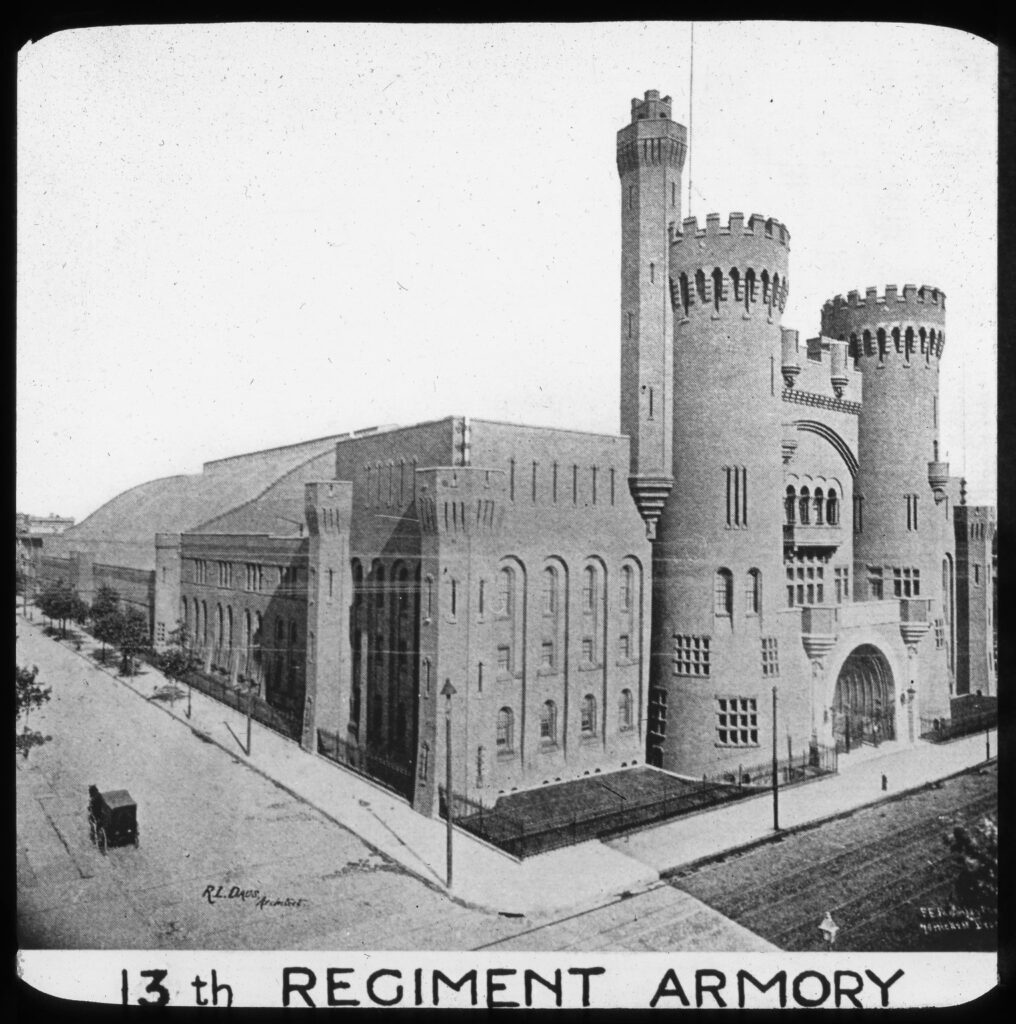
The armory, bound by Sumner Avenue on the west, Putnam Avenue on the north, and Jefferson avenue on the south, could only expand in one way – into two rows of brownstones.
Behind the armory, on Putnam Avenue, sat a row of brownstones from the 1880s, while, on Jefferson Avenue, a more recent vintage of brownstones from the 1890s.
Thus, the only way the extension could take place was on the block behind the structure – where rows of brownstone houses existed.
The State approached the owner of those houses, one of which was none other than Captain Sydney Grant who, interestingly, was an officer with the 13th Regiment, himself.
Although Grant was willing to cooperate, the State did not accept the price that Grant gave them.
Controller Edward M. Grout reported to the Estimate Board, though, that it had been impossible to come to an agreement with the owners of the property.
The board, thus, voted to reject the offers for the private sale of the property that had been received and decided, instead, to begin “condemnation proceedings,” which were a type of eminent domain, wherein the state had the power to take private property for public use (following the payment of just compensation to the owner of the property).
THE STATE CLAIMS ITS LAND
Thus, in 1905, when Grant learned he would be compensated for the loss of his brownstones – although probably not for the price he could have gotten for them on the open market – he decided he was not going to just watch the State destroy them. So, he likely purchased the buildings as salvage with the idea of using them somehow – as buildings.
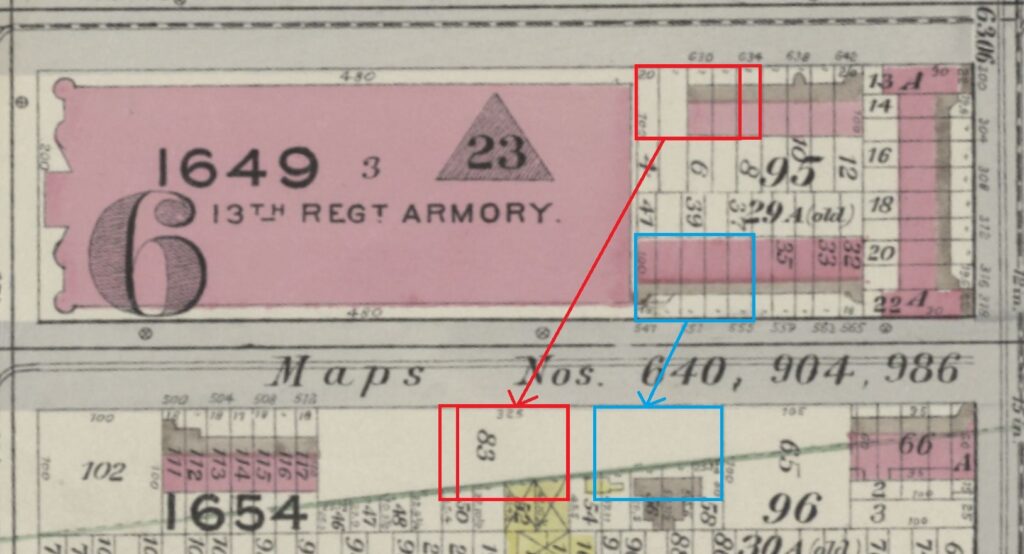
They were good brownstones – his Jefferson houses were not yet 10 years old.
He then sought out the house-moving company of Iversen & Gustavsen, a Chicago company, now operating in New York with an office at No. 28 Second Place in Brooklyn.
He asked Mr. Iversen if he could move the five houses “in a lump.”
Iversen considered the request. He “had moved brick houses one at a time. Out In the country he had rolled a row of frame buildings across a field. He even remembered, a few years back, in Springfield, Ill., having moved for a distance of 600 feet a mansion occupied by a maiden lady without once dislodging from their moorings her set of false teeth.
“But to pick up a section of a city block and trundle it around was a proposition which presented startling possibilities.
“After pondering for a few minutes, he turned in his chair and said: ‘Go ahead and get your new foundations ready. I’ll tackle the job.'”
The cost, $13,500 (approximately what you might be expected to pay for two 10-year old brownstones in 1905).
PREPARING FOR THE RELOCATION
It all began when a gang of workmen appeared at the scene with 200 screws, ready to begin the work of raising the row of houses from their foundations.
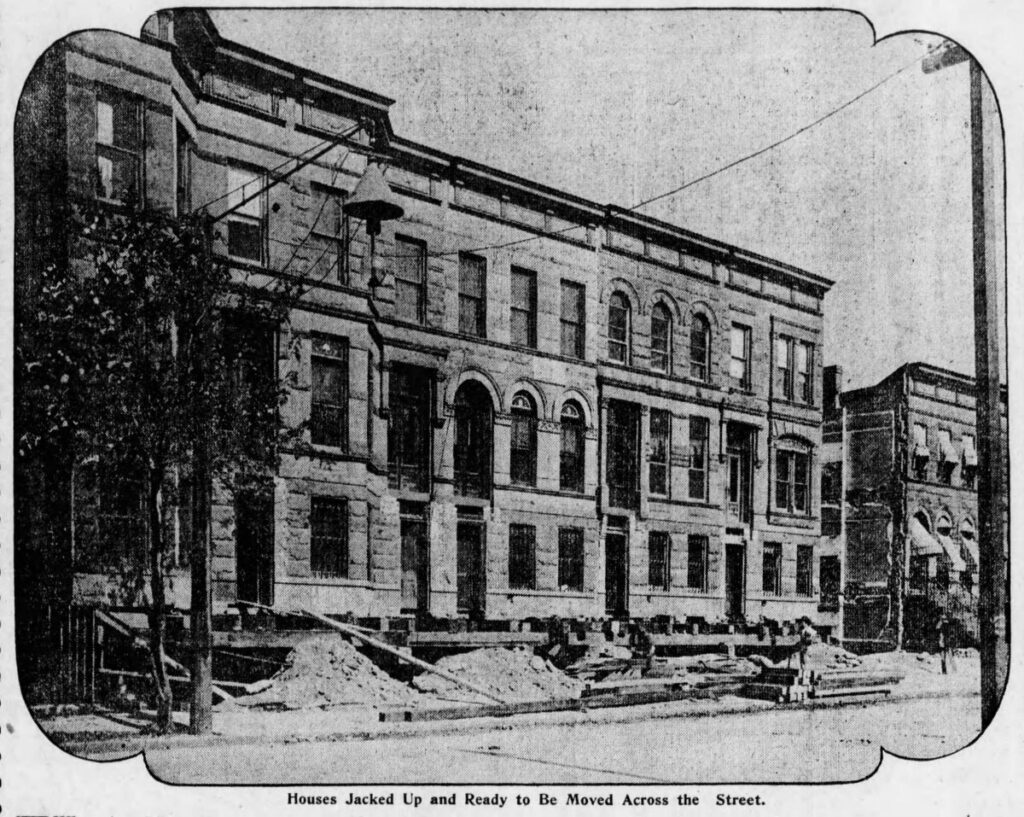
“Seventy thousand feet of timber were unloaded alongside to place under the structures as fast as they began to rise,” noted the Brooklyn Daily Eagle.
“Owing to the enormous weight that would rest upon them, it was necessary to have these timbers of the strongest kind of wood and absolutely flawless. Beams cut from oak and yellow pine, some of them 14 inches square and 63 feet in length, were selected.
“Through the upper stories of the two end houses big wire cables, drawn taut by machinery, were stretched from the front to the rear windows to prevent the buildings bulging.
“Then the screws, distributed along the row so as to make the pressure as even as possible, were set at work.
“Inch by inch the houses, as a unit, began to rise from the foundation walls. The timbers were gradually slipped underneath until the bottom of the row was six feet above the top of the cellar walls.
“Mr. Iversen was on the ground superintending every stroke of work and inspecting the interior of the buildings a hundred times a day to make certain that there were no indications of cracks in the walls or floors.
“How slow the progress was may be imagined when it is stated that it took three weeks to lift the row the six feet necessary before it could be moved across the street.
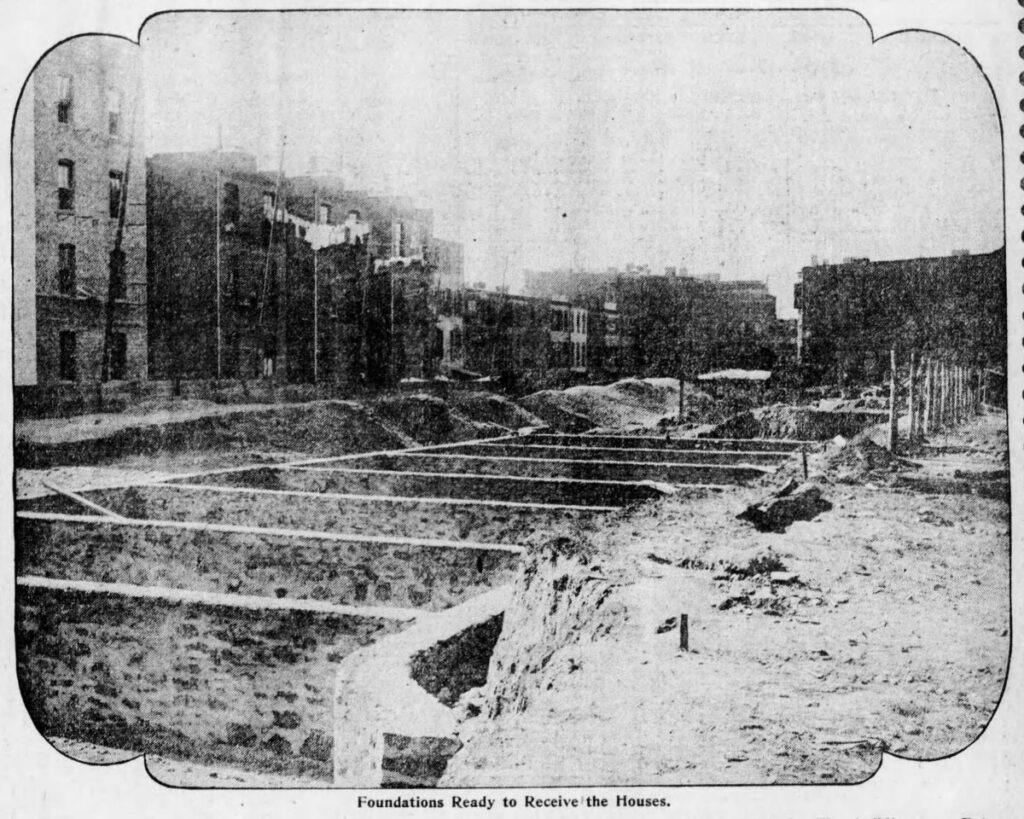
“To swing around a row of five houses is no easy undertaking, even if you have a prairie in which to operate. When you have just three inches to spare it causes a man to lie awake nights thinking.
“This was the situation which the movers faced. Directly across the avenue is another row of dwelling houses and between the edge of the stoop of the most westerly one and the southeast corner of the armory walls the tape stretches exactly 92 feet 3 inches. Through this space it was necessary to move the row, measuring from end to end just 90 feet.
“The stoops of the immigrant dwellings were lifted away, and with the aid of twelve screws, the moving of the houses forward and turning them at the same time commenced.
“Twenty of the most expert mechanics to be found in the city were employed, Mr. Iversen himself directing the job. First the easterly end of the row was swung around until the front of the houses was parallel with an imaginary line stretching from the end house stoop across the way to the southeast corner of the armory.
“Then the entire row was pushed straight ahead.
“It moved at worse than a snail’s pace; in fact, compared with the velocity of the roving dwellings, a snail could qualify as a sprinter. A man was stationed at each of the twelve screws and whenever Mr. Iversen blew a whistle each man gave his screw a quarter of a turn. During each fifteen minutes of actual work, the 200 tons of brick, mortar and wood advanced not more than one foot. Twelve feet per working day of eight hours was the average distance laid down by the perambulating houses.
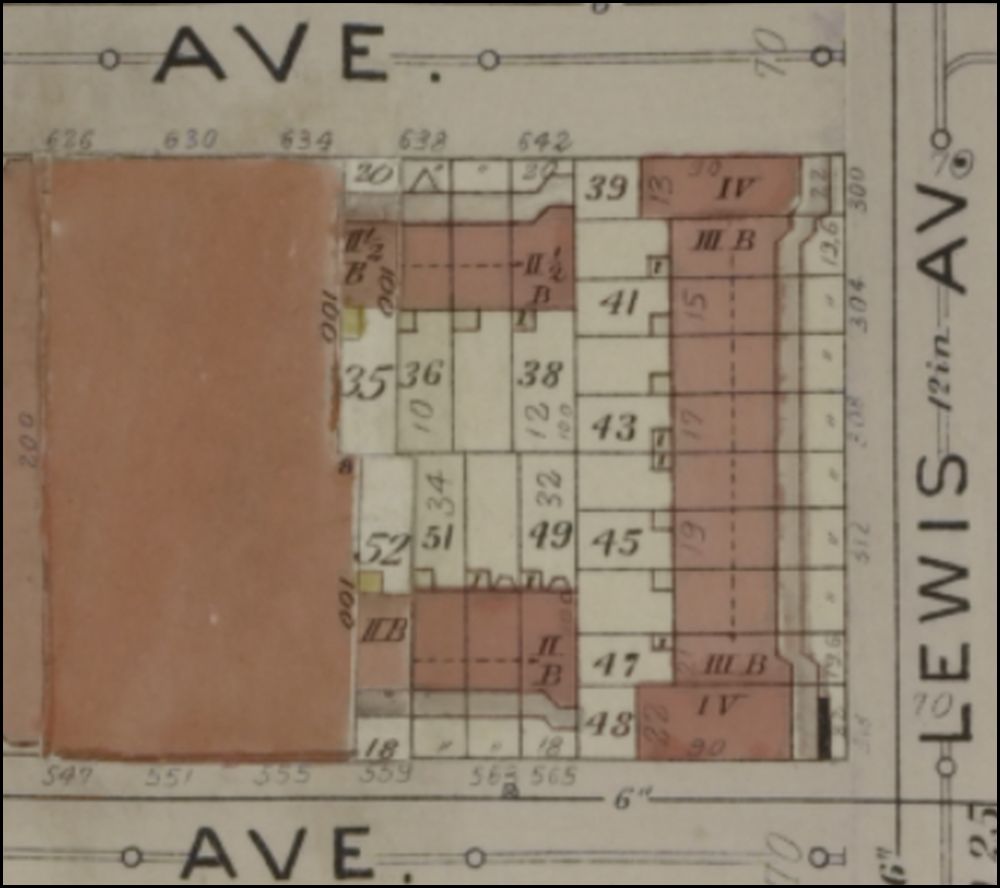
“But the advance, if slow, was steady. The plans had been made with the utmost precision and thus far not a single glitch has occurred.
“Straight as an arrow the row was trundled forward on the giant roller pins until the front wall of the row crossed the imaginary line.
“It was then discovered that between the outer wall of the westerly house and the angle of the armory walls there was exactly one inch, while between the wall of the easterly house of the row and the edge of the stoop on the westerly house on the south side of the avenue there were just two inches.
“Foot by foot the huge row has been pushed along until today the rear wall of the easterly house is beyond the projecting stoop.
“The middle house of the roving row is now almost exactly in the middle of the street, the two houses to the left stretching slantwise across the thoroughfare in a southeasterly direction and the two dwellings to the right cutting across the avenue in a northwesterly direction.
“Now that the projecting stoop has been cleared the row will be turned the rest of the way around so that the front of the houses, which now face southward, will face the north.
THE BROWNSTONES FIND A NEW HOME
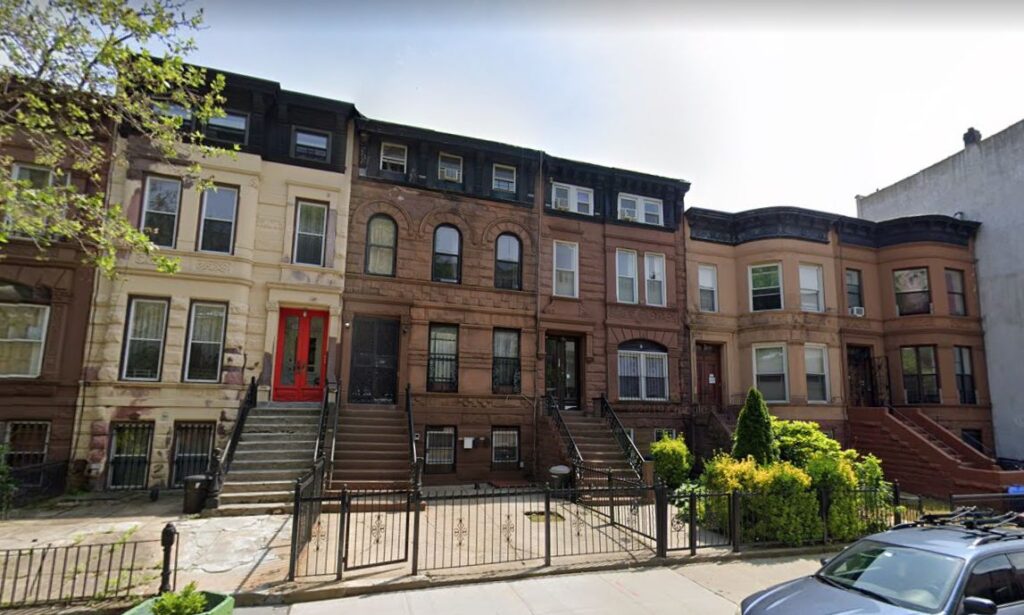
As soon as these houses dropped anchor the contractors went to tackle another job of the brownstones on Putnam.
This row would also be moved to make way for the armory extension and the movers engaged to trundle it off bodily.
These brownstones rolled back to Jefferson Avenue over the ground which the roving row formerly occupied, and they were deposited on lots adjoining the ground which the immigrant buildings covered on the south side of that thoroughfare.
The moving of them was comparatively easier job for the reason that they would not have to be turned around.
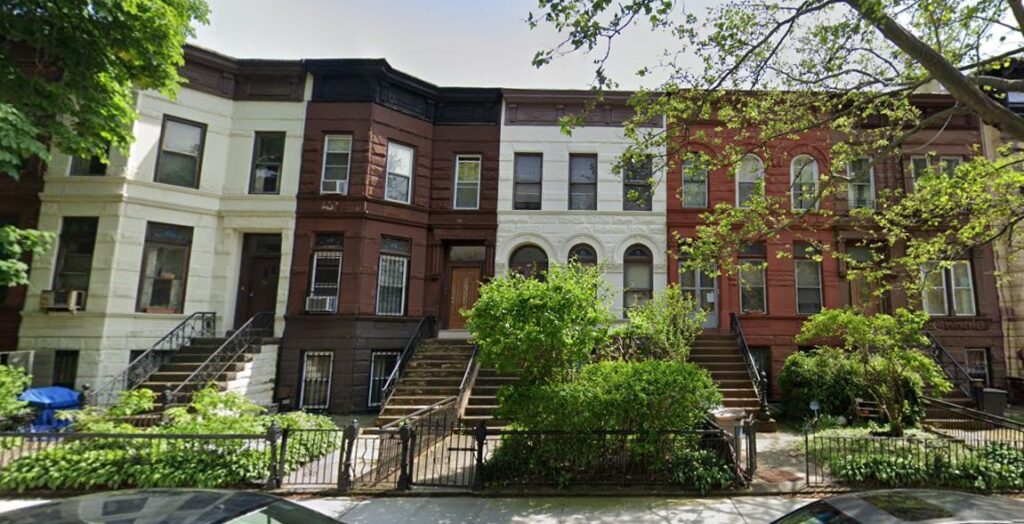
In the end both rows of brownstones were relocated without a mishap. The workers removed the heavy timbers on which the buildings rode across the avenue.
“Not a stone was misplaced, a ceiling cracked, a window broken or anything put out of plumb in moving,” noted the Brooklyn Standard Union. “This was considered one of the most difficult jobs ever undertaken by the contractors.”
Nos. 547-555 Jefferson Avenue on the northside of Jefferson Avenue had suddenly became Nos. 534-542 on its southside. Nos. 624-632 on the southside of Putnam Avenue had then become Nos. 524-532 also on the southside of Jefferson Avenue.
POSTSCRIPT
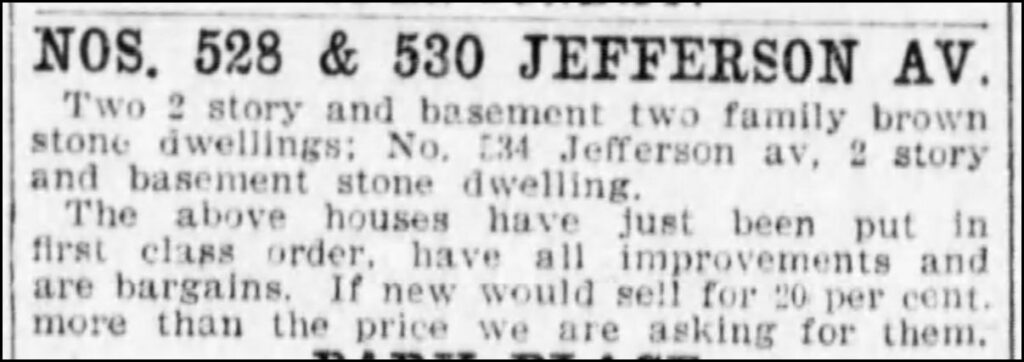
After the buildings were placed in position upon their new sites, new foundations were “built up to meet them.”
No advertisements for the sale of the buildings in their new locations were discovered the year of the move, so it is likely that the owners continued to own them, and after reconnecting services, building new stoops, and preparing the buildings for occupants, rented them out to families.
In 1907, though, “E. J. & S. Grant” (probably Sydney Grant and a relative with the same name) were advertising for sale Nos. 528, 530 & 534 Jefferson Avenue.
Possibly due to the Panic of 1907, Grant may have sold them to – or placed them into the hands of – realtor Louis I. Grimes, as Grimes was advertising several of these houses in the following years.
———————————————————————————————————————–
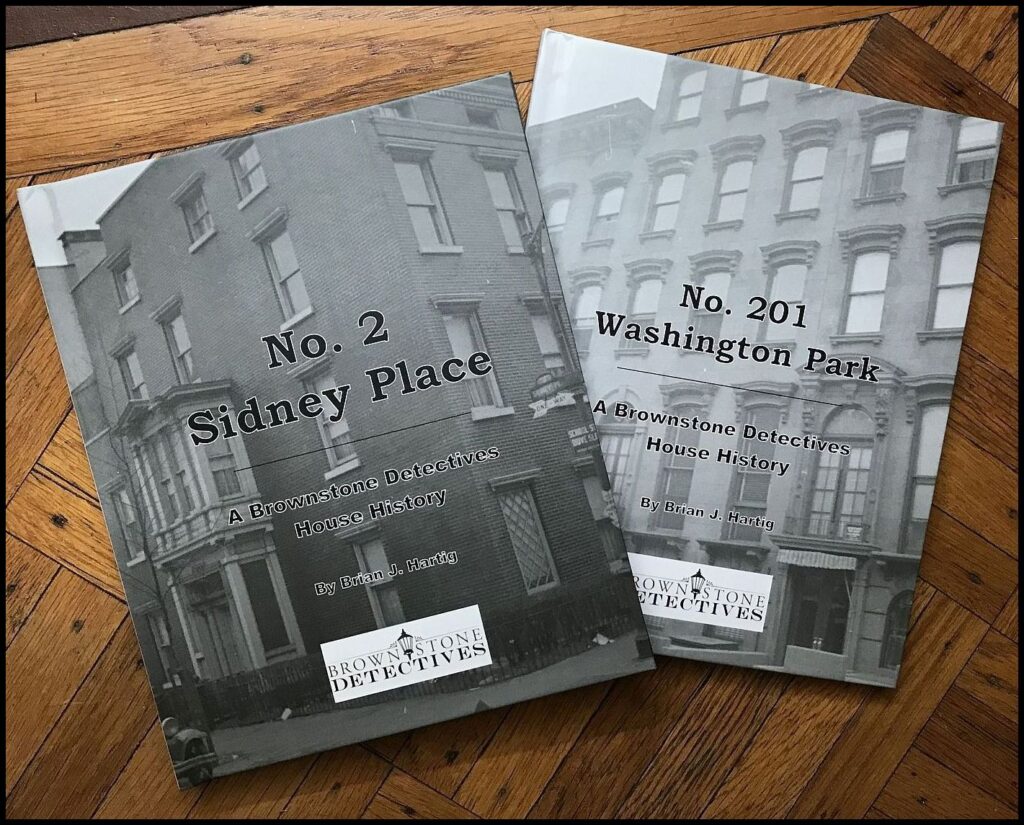 Brownstone Detectives is an historic property research agency. Our mission is to document and save the histories of our clients’ homes. From our research, we produce our celebrated House History Books and House History Reports. Contact us today to begin discovering the history of your home.
Brownstone Detectives is an historic property research agency. Our mission is to document and save the histories of our clients’ homes. From our research, we produce our celebrated House History Books and House History Reports. Contact us today to begin discovering the history of your home.